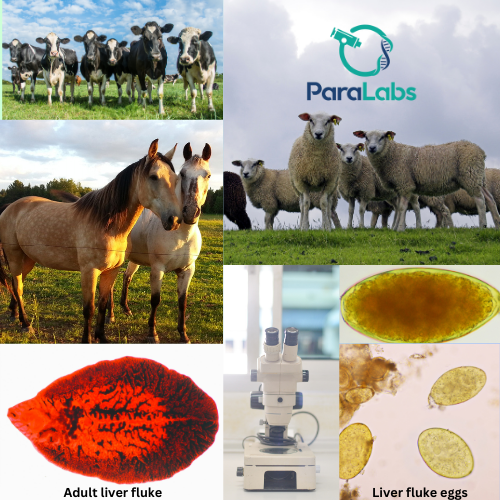GutWorm Faecal Egg Counts (FEC)

FEC testing gives you a guide of the level of parasitic worms inside your animals. In cattle and sheep there are approximately 20 species of gutworms which may cause a range of diseases when in numbers. In animals, the parasitic gutorms types include roundworms, whipworms, hookworms and tapeworms. These parasites live inside the animal and usually cause organ damage as well as disrupting animals ability to absorb nutrients. Low level of gutworm infection in animals can be beneficial as it allows the animal to develop its own immunity against the parasites.
Gutworms may cause major disease in animals, and cause economic losses for the farmer, such as;
- Failure to thrive
- Anemia
- Poor health
- Weight loss
- Diarrhea
- Death- In some cases.
The gutworms which cause the most illness in cattle are Cooperia and Ostertagia. In sheep the most significant are Haemonchus, Nematodirus, Teladorsagia and Trichostrongylus. In horses, the most common are Cyathostominae (blood worm), Strongylus and Parascaris.
It takes at least 3 weeks for the gutworm parasites to develop inside the animal and start laying eggs. This means the animal must be on grass for 3+ weeks before the worm eggs can be detected in the lab. When animals are turned out in spring to graze, gutworm larvae can be present on the grass as they can survive the winter's harsh conditions. These larvae can then infect the animals when suitable weather conditions occur. Most animals develop immunity to gutworms over their lifetimes but other diseases can tax the immune system at any age and allow the parasites to reinfect. Exposure to gutworm parasites can be reduced by grazing management, cross-species grazing and reducing stocking rates.
The results from the Gutworm Faecal Egg Counts (FEC) inform you on parasite types detected and estimate eggs per gram (EPG) present. There is a known correlation between eggs per gram and the number of parasitic adult worms present in the animal gut & intestines. The results of this test will tell you the count and the type of worms, such as the Trichostrongyle family in cattle and sheep. To distinguish between the different Trichostrongyle eggs a larval hatch may be carried out, but this is infrequently required. Gutworm testing supplies detailed information so you can make decisions on drug treatment, grazing patterns and administration plans. This test can also detect resistance or if the treatment worked by a post-dosing faecal egg count/drench test (FEC test) or a faecal egg count reduction test (FECRT).
Resistance of anthelmintics and flukicides (parasite drugs) is now a large issue. Anthelmintic/flukicide resistance occurs when worms/fluke survive a dose of a wormer/fluke treatment that would normally be expected to kill them. Faecal Egg Count (FEC) & Sedimentation is vital to monitor anthelmintic/drugs effectiveness. Many farms in Ireland already have some form of anthelmintic (treatment) resistance present in their livestock, which may cause major production & financial loss.



